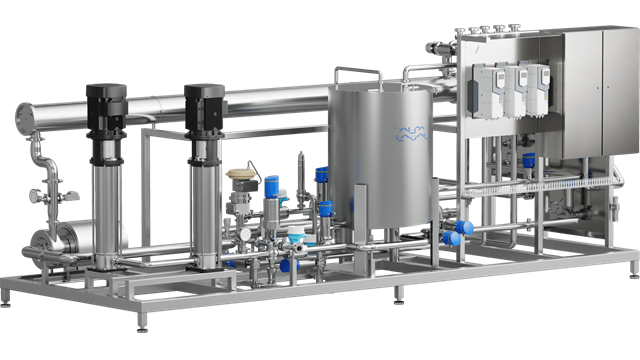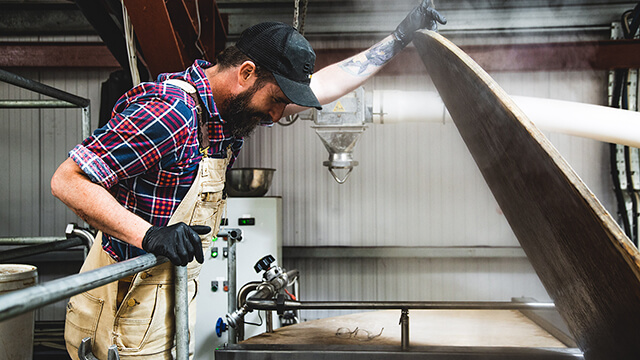Low-alc de-alcoholization module
Achieve the full sensory experience of beer and fermented beverages with less than 0.5% ABV. The Alfa Laval Low-alc module helps you meet demand for healthier, low-alcohol alternatives without sacrificing quality. Compact and fully automated, it uses gentle, low-temperature membrane filtration to remove alcohol while preserving taste, aroma and mouthfeel. Energy-efficient and easy to integrate, it’s a smart, stand-alone solution for breweries, wineries and beverage producers.
Full sensory experience at less than 0.5% ABV
- Outstanding taste
- Scalable flexibility
- Cleaner waste stream through alcohol recovery and reuse
- Consistent quality in every batch due to spiral membrane filtration
- One system, endless product possibilities
Rely on the Alfa Laval Low-alc module to meet growing demand for healthier, great-tasting beverages with less than 0.5% ABV. Compact and scalable, it uses gentle reverse osmosis and spiral membranes to preserve the full product flavour, aroma, and mouthfeel.
One versatile module lets you produce premium low-alcohol beer, malt bases, ciders, wines, and other fermented beverages. Designed for flexibility, it adapts smoothly from craft to commercial scale, allowing you to adjust batch sizes and recipes as trends evolve.
The Low-alc module also supports your sustainability goals by reducing waste and generating new revenue through alcohol recovery. With low energy use, minimal oxygen pickup, and automated CIP, it’s a clean, efficient solution backed by Alfa Laval’s global support.
How the Low-alc de-alcoholization module works
The Alfa Laval Low-alc uses cross-flow spiral membrane filtration to gently reduce alcohol content while preserving the natural flavour and character of beer and fermented beverages. Operated at low temperature, it maintains product integrity throughout the process.
This skid-mounted, plug-and-play unit is designed for batch operation. It connects to a batch tank via an integrated swing-bend panel. Batch size and target alcohol levels are entered manually via HMI. Once started, the system runs automatically through the full cycle.
This de-alcoholization process using membrane filtration consists of three steps:
- Upconcentration – The beer or beverage is concentrated to approximately three times its original strength.
- Diafiltration – Deaerated water flushes alcohol from the concentrate, reducing the alcohol content to roughly three times the target ABV.
- Refilling – The system refills the batch tank with deaerated water to restore original volume and reach the desired alcohol level.
Achieving the final CO₂ level after processing requires carbonation.
Automated CIP is included, with manual dosing of cleaning agents and operator confirmation via HMI. The system is cost-efficient, easy to maintain, and extendable for future capacity needs.
满意的客户
服务
食品系统服务
阿法拉伐食品系统服务通过最大限度地提高工艺性能,帮助您扩展食品系统的性能。这使您能够:
- 持续改进运营,保持竞争优势
- 专注于正常运行时间、优化和可用性
- 在食品系统的整个生命周期内实现投资回报最大化


